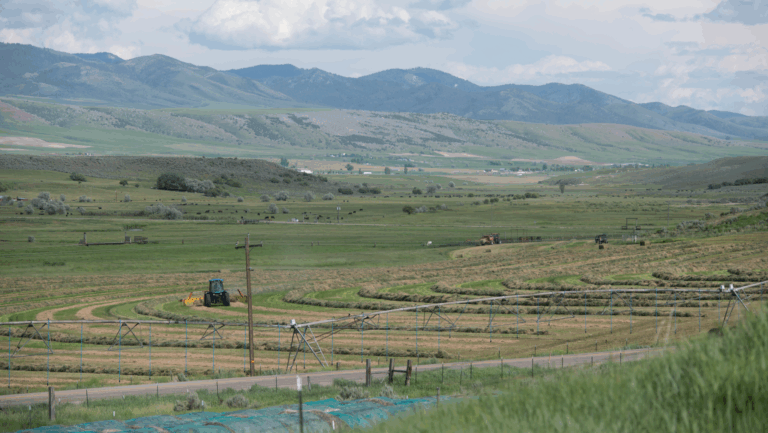Agricultural Trade Outlook for 2025
Unpacking the latest USDA agricultural trade outlook to identify opportunities and challenges for our U.S. farmers and ranchers.
Agricultural trade is the lifeblood of U.S. farming and ranching. Since 2008, the export proportion of U.S. agricultural production has held relatively steady at about 20 percent, with a compound annual growth rate of 2.1 percent from 2013 to 2023. But at the same time, U.S. agricultural imports have increased at an annual growth rate of 5.8 percent, leading to a widening agricultural trade deficit over the last several years.
With global markets shifting and a pivotal election right around the corner, understanding these changes to the best of your ability is necessary when making financial and operational decisions for the year ahead. The USDA’s latest agricultural trade outlook offers key insights into what experts predict lies ahead in 2025.
Learn the factors involved in this latest ag trade outlook report and what opportunities U.S. lawmakers and farmers alike have to turn the tides.
Summary of the 2025 U.S. Agricultural Trade Outlook
The USDA projects a decline in U.S. agricultural exports to $169.5 billion in FY 2025, driven largely by several key factors. Meanwhile, imports are expected to rise to $212.0 billion, widening the trade deficit to a staggering $42.5 billion. This significant shift presents both challenges and opportunities for U.S. farmers, but first things first, why is it happening?
Factors Influencing the U.S. Agricultural Trade Deficit
- Declining Export Prices: Lower unit values for key commodities like soybeans, corn, and beef are reducing the overall value of U.S. exports, even as volumes remain steady or increase.
- Rising Imports: Increasing demand for imported horticultural products, sugar, and tropical products, coupled with a strong U.S. economy, is driving up import values. Horticultural products generally make up as much as half of U.S. agricultural imports, which includes a broad category of fruits, vegetables, spirits, wine, essential oils, tree nuts, and nursery stock.
- Global Competition: Strong competition from countries like Brazil, particularly in the soybean and corn markets, is impacting U.S. export growth.
- Currency Strength: The appreciation of the U.S. dollar makes American goods more expensive abroad, further challenging export growth.
- Supply Chain Challenges: Issues like high freight costs and logistical bottlenecks continue to affect the efficiency and cost-effectiveness of U.S. agricultural exports.
Market Opportunities and Regional Insight for U.S. Agricultural Trade
Now that we have more of an understanding of the factors contributing to this widening agricultural trade deficit, here’s a bit more findings from the USDA’s report to help you identify the pockets of opportunity for American farmers and ranchers in an increasingly competitive global market.
North America
Exports to Canada and Mexico remain stable, with horticultural products and ethanol showing strong potential. These markets continue to be reliable for U.S. producers, providing a buffer against global volatility.
Asia
While the Chinese market faces challenges due to strong competition and reduced demand, other Asian markets present opportunities. Diversifying exports within Asia could help mitigate the risks associated with China. For example, Southeast Asian markets like Indonesia and the Philippines demonstrated strong demand for soybeans, soybean meal, and cotton. Additionally in the report, the USDA highlighted potential growth in Vietnam, specifically for cotton, soybean, and processed agricultural products.
Other Emerging Markets
Beyond Southeast Asia, the USDA report identified several more emerging markets as key areas for U.S. agricultural export growth. These markets are classified as “emerging” due to their increasing economic development, growing populations, and rising demand for agricultural products. Africa is showing potential due to improvements in infrastructure and a growing middle class, leading to higher demand for food and agricultural inputs. Latin America, particularly countries like Colombia and Brazil, offers opportunities due to their expanding economies and agricultural partnerships.
Actionable Insights for American Farmers and Ranchers
While the upcoming election may influence the future of U.S. agricultural trade, there are three strategies American farmers and ranchers can implement now when navigating the complexities of the global agricultural trade landscape.
- Prioritize Stability: Secure contracts with stable markets like Canada and Mexico where demand remains consistent and strong, particularly for horticultural products and ethanol.
- Diversify Markets: Explore alternative Asian markets to reduce dependence on China and tap into growing demand in the region.
- Stay Informed: Keep abreast of competitor crop conditions, USDA initiatives, tariffs, and other global trade trends to identify new opportunities and mitigate market risks.
Capitalize on Opportunities and Mitigate Risk with AgAmerica
Understanding the shifting dynamics of agricultural trade is essential for staying ahead in this competitive environment. AgAmerica offers tailored financial solutions to help hardworking farmers and ranchers like you capitalize on new opportunities and shield your operations from preventable risk. Whether you’re looking to expand your market reach or need advice on navigating the uncertainties ahead, AgAmerica is here to help.
Contact AgAmerica today for personalized financial advice or sign up for our newsletter to stay informed about the latest trends in agricultural trade.






